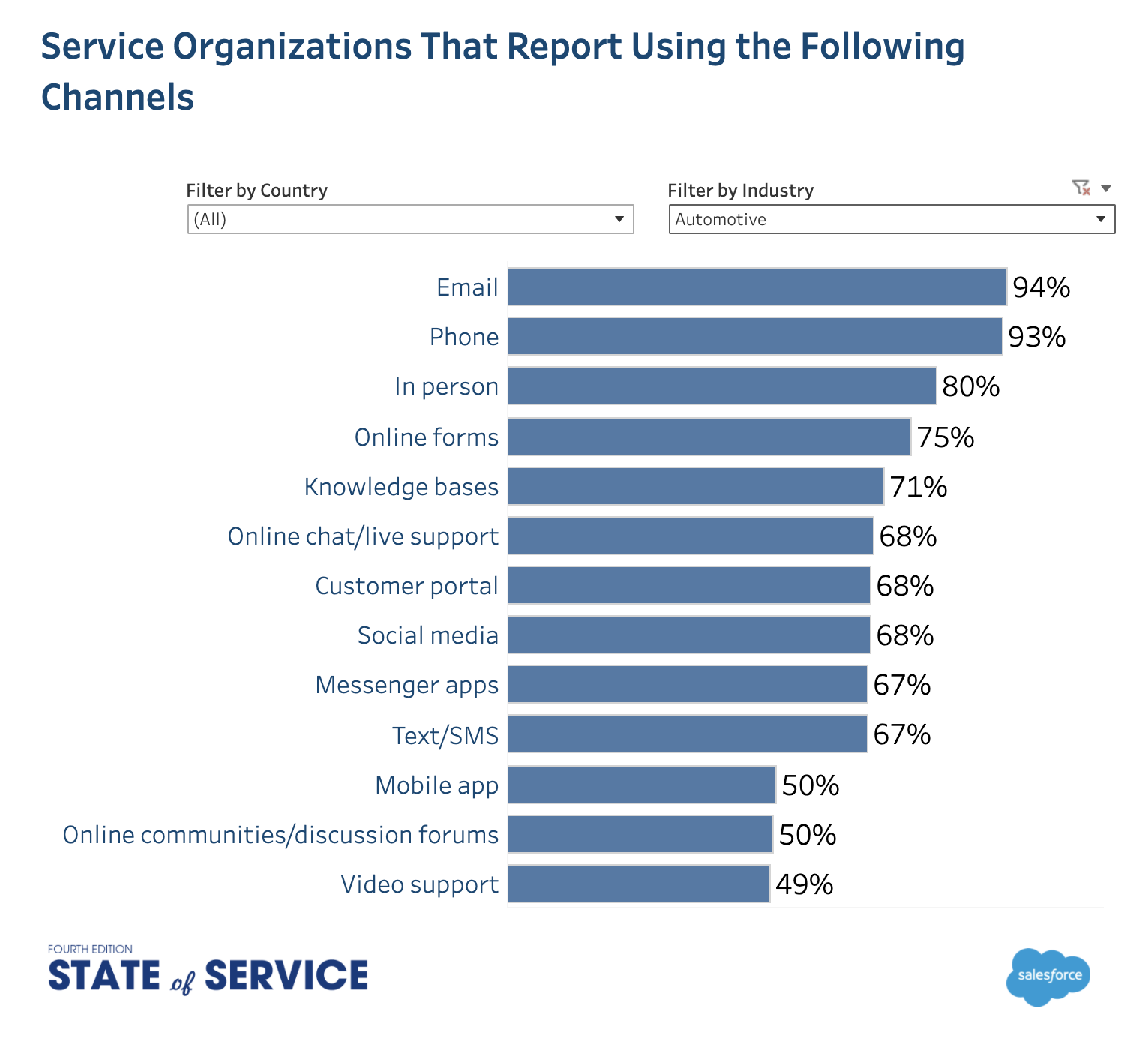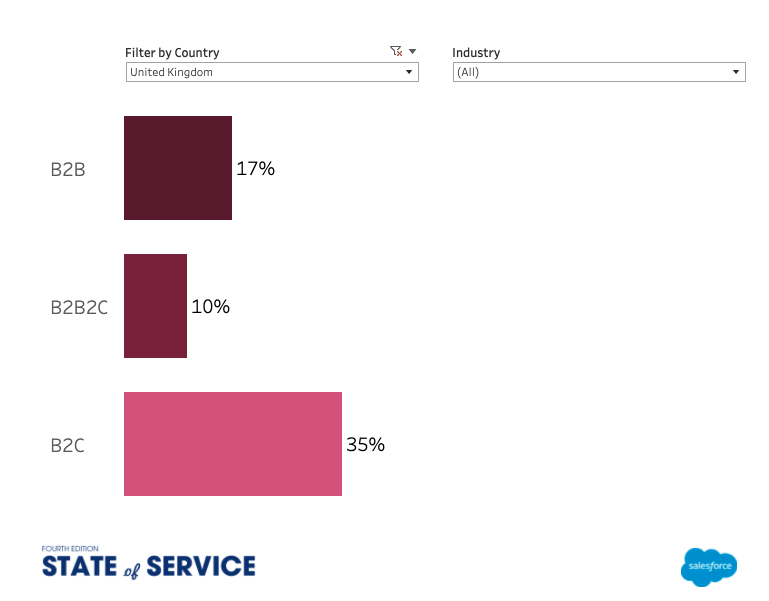Digital customer service channels like online chat, messenger apps, and video support have seen double-digit adoption gains. Is your organisation keeping up?
Digital customer service channels help service teams meet customer expectations for fast and flexible support. When call volumes reached unprecedented heights during the early months of the COVID-19 pandemic, organisations leveraging customer service automation and digital customer service helped more customers more quickly through FAQ pages, chatbots, mobile, and web chat while reducing call volumes.
Customer service is now all-digital, all the time. Channels such as online chat, messenger apps, and video support saw double-digit adoption gains in 2020 compared to 2018, according to the Salesforce State of Service report. Based on research from 7,000 global decision makers, agents, mobile workers, and dispatchers at service organisations, we’ve gathered insights on the most popular channels today, customer service automation, and what you can do to bring your contact centre up to speed.
How to rethink your strategy for contact centre transformation
“87% of service professionals say customers have increased their use of digital channels during the pandemic”
Mobile options to keep the conversation going
Mobile is an asynchronous service option that keeps the customer conversation going. During high-stress moments, customers love mobile options because they are convenient and provide a record of past interactions to streamline the entire service experience.
For a more personalised experience, agents can work with multiple customers at one time and refer to previous interactions. Service organisations increased using messenger apps by 29%, and 21% have been using mobile apps since 2018.
One of the ways you can utilise mobile efficiencies is to give customers the option to add a preferred mobile number before they complete a transaction. You can only use chatbots to automate routine customer requests on SMS, WhatsApp, and Facebook Messenger.

Social customer service can help nip any potential problems in the bud
Seventy-one percent of service organisations use social media channels. Your customers may express their frustrations on your social media pages or as a comment on your posts. You need to get in front of these issues before they snowball — especially if they could damage your reputation.
Connecting your marketing and service teams with social customer service gives you a complete view of the customer before responding to a social media request. When a customer replies to a post with a complaint, your team can immediately resolve it. Social media channels can also help you monitor keywords and language to identify issues. You can also create, manage, and monitor cases from your social feeds.
Self-service channels work for quick questions
“65% of customers prefer self-service for simple matters ”
Chatbots provide personalised digital support
There has been a 67% increase in organisations using chatbots to scale service since 2018. Chatbots are an extension of your self-service. They analyse data with artificial intelligence (AI) to resolve common issues by recommending relevant knowledge articles and answering simple yes or no questions. Customers use them for simple questions, like their order status. The contact centre benefits from chatbots because they reduce the number of calls for lower-tiered, routine requests. As a result, agents can stay focused on more complex cases and strategic work.

Chatbots offer a personal touch to your digital customer service channel offering, providing you programme them with natural language. It’s a good idea to have them introduce themselves to customers and use the customer’s name. If a case is more complex, chatbots should gather qualifying information and route the case to an agent.
Video for face-to-face interaction
Voice capabilities create a connected service experience
The path to all-digital customer service channels
It’s not enough to just be available — service organisations must have all of their service channels connected with the right data and automation. For example, if a customer reaches out by web chat about a purchase order, help the customer by providing the chatbot with the correct data. Or, if a customer reports a lost credit card, you need to provide the right knowledge article with guidance on the process.
Make sure your contact centre is connected to field requests across channels. Empower your teams with a 360 view of the customer and the ability to manage cases across channels without having to toggle between different systems. With a single platform, more informed agents can manage phone calls and ongoing issues on chat, SMS, and other digital customer service channels to help multiple customers at once.
Connect your digital customer service with your CRM
Take a step further by connecting digital customer service to your broader organisation. Companies that connect customer service with their CRM platform are better equipped to deliver a personalised customer experience. Today, just 71% of agents say they have a complete and accessible view into sales, 69% into ecommerce, and 65% into marketing.
Once you have the right technology in place, you can reimagine your digital strategy to prioritise digital customer service. Try out these tasks:
Embed case management workflows to ensure cases are assigned to the next available agent with the best skill set to resolve the issue.
Give customers and agents greater flexibility with asynchronous service options.
Rethink how you measure success. In an all-digital world, first-time resolutions are more important than case handle time. Some interactions can last hours or days with asynchronous service.
The last word on digital customer service
Your channel selection depends entirely on your business. What works for a retailer may not work for a manufacturer. Test out channels to see what resonates with your customers. Keep an eye on innovative customer service trends and regularly review your data to ensure your teams always meet expectations for fast, flexible, and quality service.








